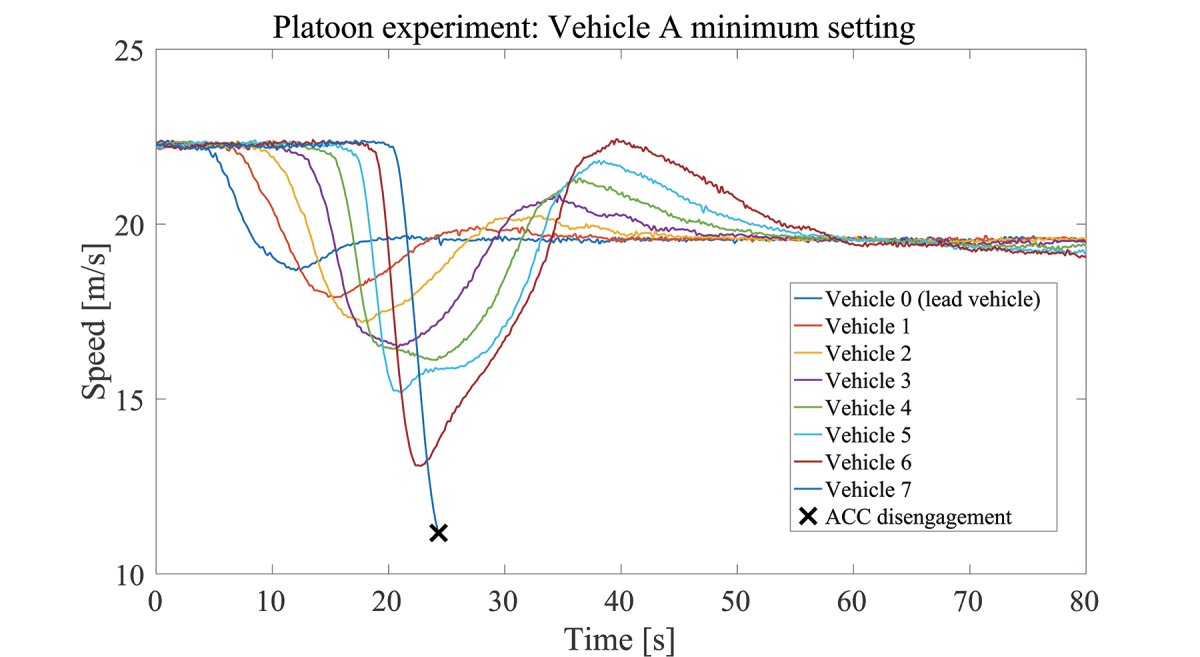AVs and Traffic Flow

RAPHAEL STERN researches vehicle automation and transportation cyber-physical systems. He is specifically interested in the impact of autonomous (or semi-autonomous) vehicles on the overall traffic flow and dynamics at low market penetration rates.
As cities grow and demand for mobility increases, a point will be reached where building new transportation infrastructure is no longer feasible. Then we will have to rely on technology to increase the capacity of our roadways and meet transportation demand.
One way to increase roadway capacity without building new roads is by influencing the behavior of vehicles on the road. The driving behavior of an individual vehicle can influence the entire traffic stream and occurrence of traffic jams. In some cases, the behavior of individual drivers can cause a traffic jam, even when no bottlenecks such as construction or a reduction in lanes are present. These traffic jams are often referred to as phantom jams because they seem to arise from nowhere. They are, however, the result of how drivers follow the vehicle in front of them. It takes just a few “bad drivers” to cause a traffic jam and increase travel time and fuel consumption for everyone on the road.
Similarly, it is possible that just a few “good drivers” could counteract imperfect driving of others and reduce or even eliminate phantom jams. As AVs come closer to reality, there is a potential to leverage these vehicles to dampen traffic waves and eliminate phantom jams. Raphael Stern is working to design AV control strategies to improve the flow of traffic. Preliminary experimental results show that when only 5% of the traffic drives better, phantom jams can be nearly eliminated, which also reduces fuel consumption. Thus, the few AVs in the flow are making the traffic flow more smoothly and efficiently.
However, these preliminary results are not yet ready for deployment on real roads where lane changing, merging traffic, and bottlenecks still provide many potential triggers for traffic jams to emerge. Current research is focusing on how to make these driving strategies more robust and ready for implementation.
In order to design control strategies that could deal with those real-driving triggers, we need a comprehensive understanding of how individual vehicles influence the traffic flow and emergence of phantom jams. Stern’s research addresses how changes in driving behavior influence whether a phantom jam will occur. Many vehicles on the road already have some partial autonomous capabilities. Vehicles with advanced driver assist features such as adaptive cruise control (ACC) allow the onboard computer to make decisions about following distance, braking, and acceleration. These vehicles represent the first generation of AVs, and they may already be changing flow-level traffic dynamics. As these features become mainstream, they will shift the composite traffic flow (with both human drivers and AVs) behavior, which will influence the development of traffic phenomena such as phantom jams.
Stern’s research team has conducted experiments using commercially available vehicles to understand how these vehicles are designed to react to changes in traffic conditions, and how those reactions could influence the development of phantom jams (Fig. 3). The first generation AVs, such as vehicles with advanced driver assist features, have not been designed to maximize traffic flow and may actually decrease roadway capacity leading to more congestion and more phantom jams. However, Stern’s experimental and analytical results show that if AVs are designed with traffic flow in mind, it is possible for just a small number of AVs to improve traffic flow and reduce fuel consumption and emissions of not just the AVs, but all vehicles in the traffic.

Return to Integrating AVs